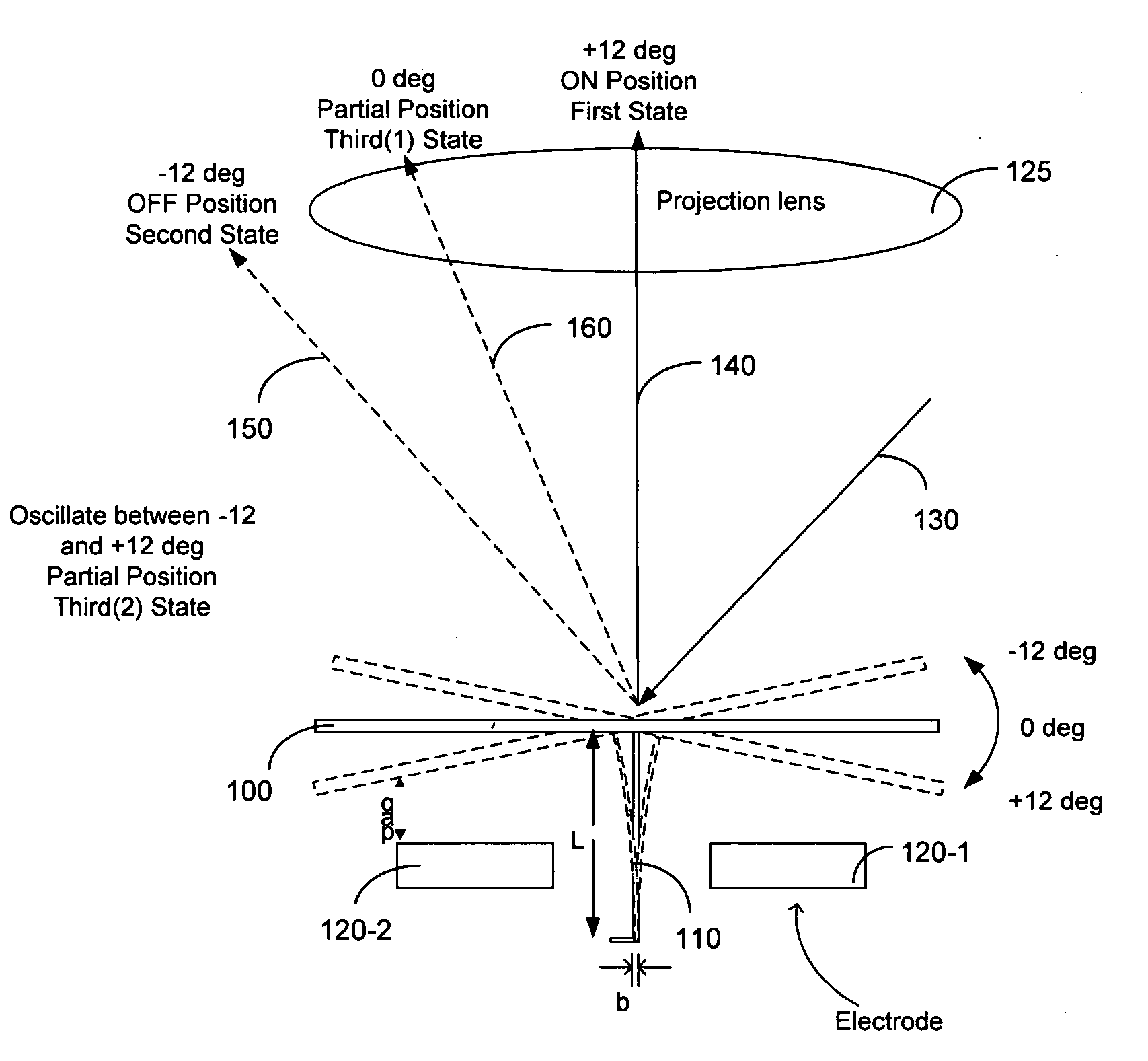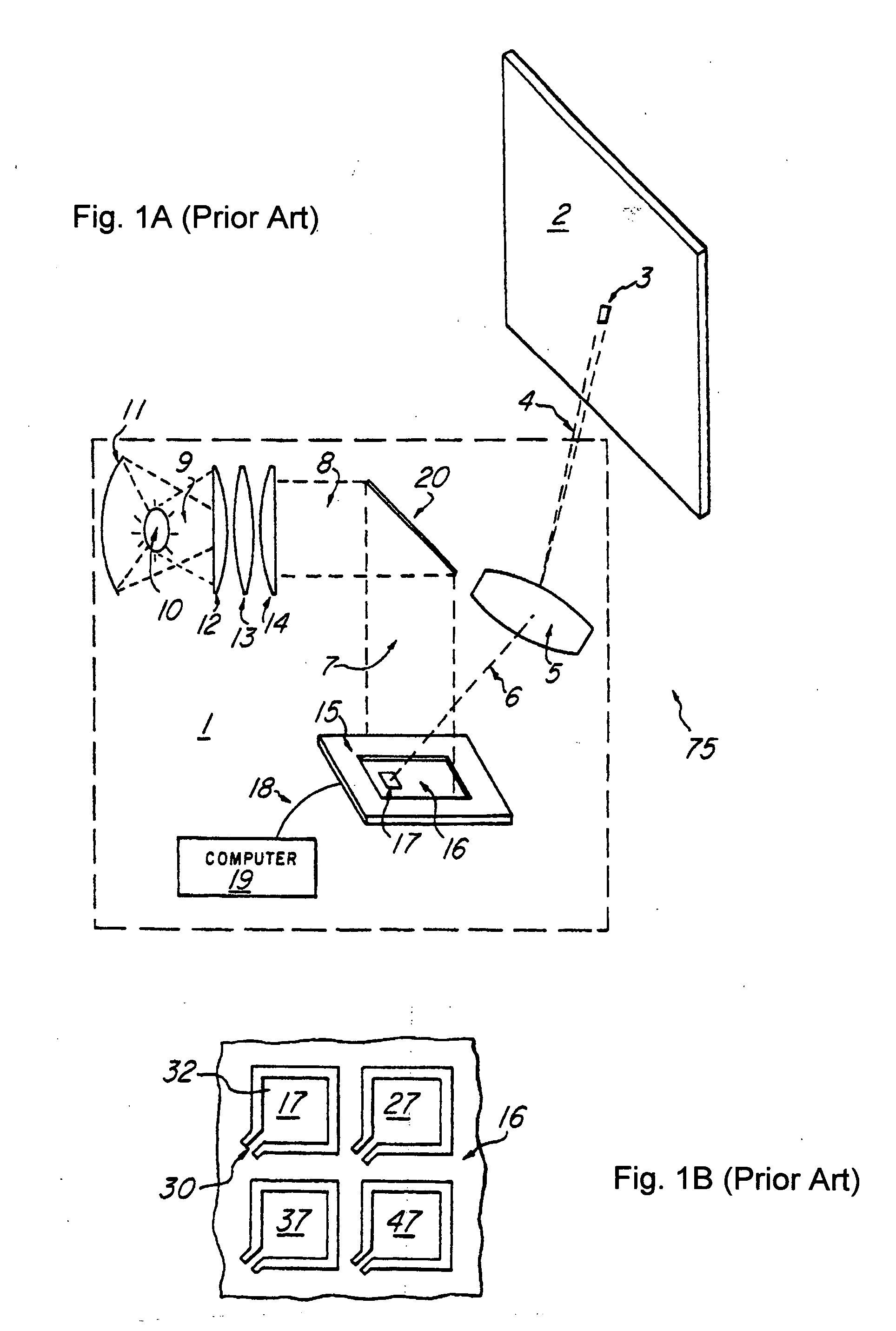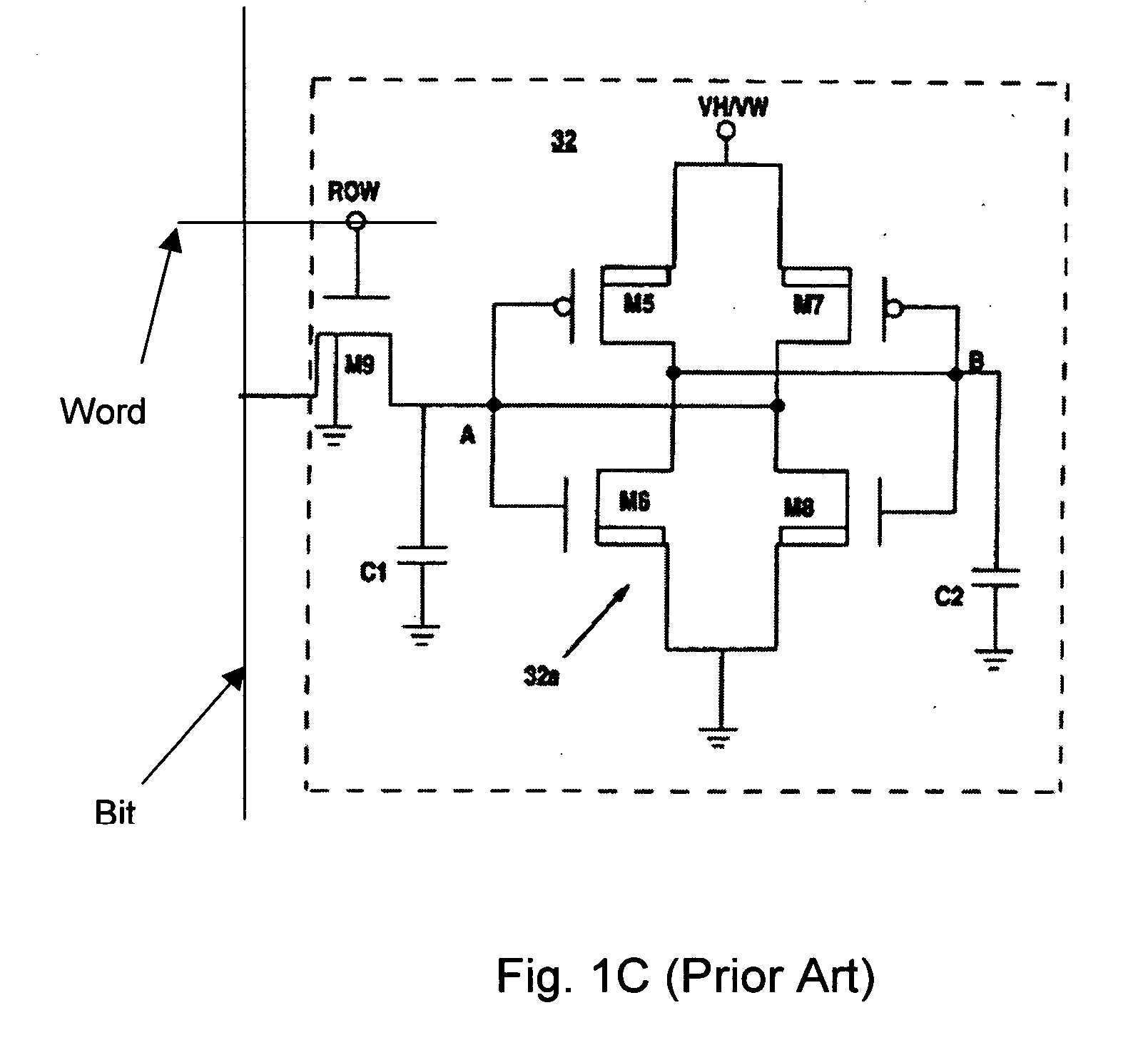Control of micromirrors with intermediate states
a control circuit and micromirror technology, applied in the field of micromirror arrays and control circuits to control the micromirrors, can solve the problems of imposing limitations on the quality of the display, adverse effects on image quality, and limitations of the use of high-quality images, so as to achieve more flexible control of the gray scale of the display and low operation voltage
- Summary
- Abstract
- Description
- Claims
- Application Information
AI Technical Summary
Benefits of technology
Problems solved by technology
Method used
Image
Examples
Embodiment Construction
[0029] Referring to FIG. 2 for a side cross sectional view for illustrating the oscillating motions of a micromirrors according to the control circuit of the present invention. A micromirror 100 supported on a hinge 110 formed on a substrate (not shown), is electrically controlled by two electrodes 120-1 and 120-2 to move to different positions, e.g., from +12 degrees to −12 degrees as shown. The incident light is projected along an optical path 130 and the light reflected from the micromirror 100 is projected to a projection lens 125 for further projecting to a display surface (not shown). The mirror surface is multi-layer to achieve higher reflection. An Aluminum surface can provide 90-92% reflectance but multi-layer can provide a higher reflection up to 98%. The micromirror is controlled to move to a full-on state when the micromirror is positioned at the +12 degrees with the reflected light projected fully onto the projection lens along a 140 direction perpendicular to the proje...
PUM
 Login to View More
Login to View More Abstract
Description
Claims
Application Information
 Login to View More
Login to View More - R&D
- Intellectual Property
- Life Sciences
- Materials
- Tech Scout
- Unparalleled Data Quality
- Higher Quality Content
- 60% Fewer Hallucinations
Browse by: Latest US Patents, China's latest patents, Technical Efficacy Thesaurus, Application Domain, Technology Topic, Popular Technical Reports.
© 2025 PatSnap. All rights reserved.Legal|Privacy policy|Modern Slavery Act Transparency Statement|Sitemap|About US| Contact US: help@patsnap.com



